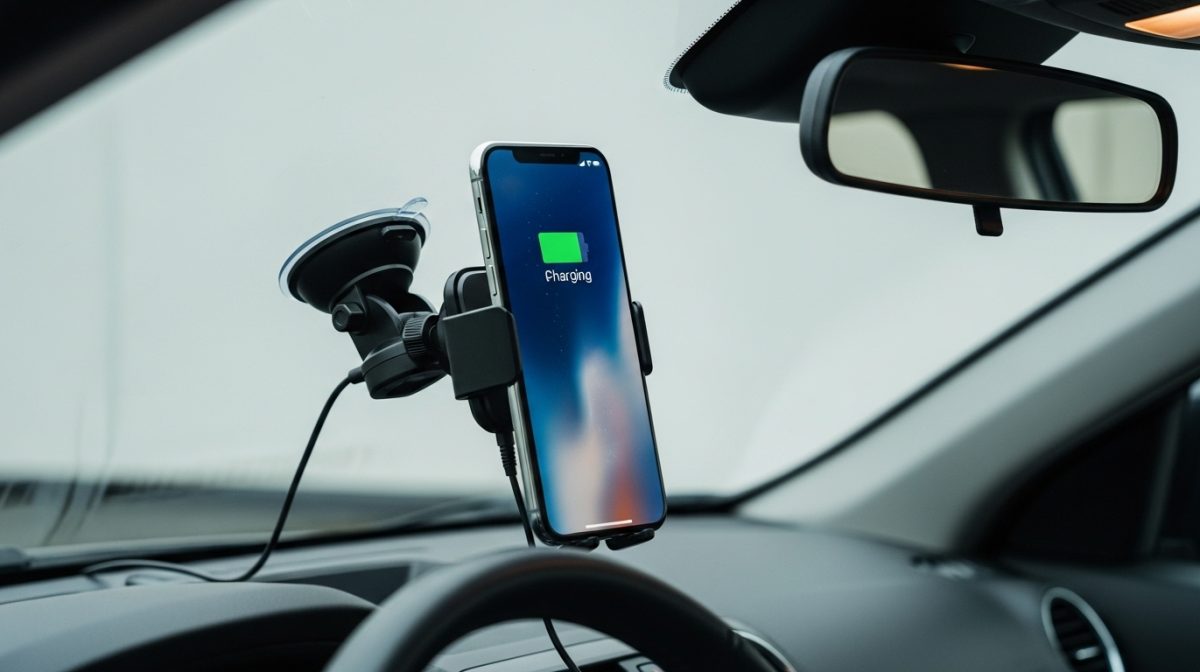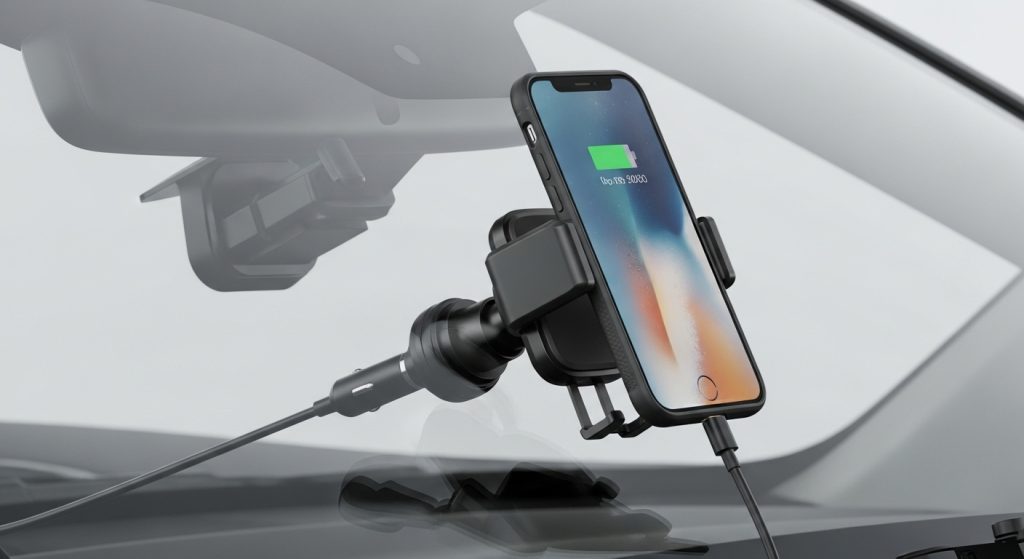How to charge phone with mount on driver side windshield?

Smartphones are very important for navigation, communication, music streaming, and more in today’s connected society, especially when driving. It’s important to have your phone in a place where you can easily see it and reach it, whether you’re using Google Maps, Waze, or just making hands-free calls. The driver’s side windshield is one of the most common and easy places to mount. But this design often makes it hard to charge your phone safely and effectively.
This article tells you all you need to know how to charge phone with mount on driver side windshield. It also helps you keep your cables organized.
Why put your phone on the driver’s side windshield?
There are a number of benefits to putting your phone on the driver-side windshield:
- Direct Line of Sight: Keeping your phone closer to your line of sight means you won’t have to look away from the road as much.
- Accessibility: In countries where the driver sits on the left, it’s easy to reach with your left hand, which cuts down on hand movement.
- Great for Navigation: It keeps maps in your peripheral vision, which is excellent for fast looks.
- One big worry, though, is how to power your device without making a mess or getting in the way.
How to charge phone with mount on driver side windshield in Steps
1. Pick the Right Mount for Your Windshield
Before you consider about charging, make sure you have a strong and adaptable phone mount. Check for:
- Strong suction: It should stay in place even on rough routes.
- Gooseneck or telescopic arm: for easy positioning.
- Head that turns: To change the point of view.
- Built-in charging: Some high-tech mounts have wireless chargers built right in.
Types that are recommended:
- Qi wireless charging magnetic mounts
- Cradle-style mounts with a charging port built into the base
- Don’t worry if your mount doesn’t have a charging feature; you can still charge it with a wire.
2. Choose the Right Cable to Charge
A cable that is the right length is the key to a tidy and effective setup:
- Find out how far your phone mount is from the charging outlet on your car. This is usually a USB or 12V socket under the center console or under the dashboard.
- For most sedan or SUV setups, look for wires that are 3 to 6 feet long (1 to 2 meters).
- To make the cables look better and put less strain on them, use a right-angle connector.
- For long-lasting and tangle-free use, choose a braided cable.
3. Use tools to manage your cables
One of the most annoying things about charging a phone from a windshield is having cords hanging down. These can:
- Block your view
- Make you lose focus while driving
- Get stuck around gear sticks or steering columns
- To take care of this:
- To keep the cable along the border of the dashboard or the A-pillar, use command hooks or adhesive cable clips.
- Think about cable organizers that attach to the trim or side of the windshield.
- Don’t run the cable across your lap or wheel; it’s not only annoying, but it’s also dangerous.
4. Pick a reliable source of power
Smartphones of days need to charge quickly, especially when using GPS or streaming music. There are three main ways to charge:
- USB Port in the Car
- Pros: It’s clean and works well with other things.
- Cons: Often not powerful enough (typically 0.5A–1A) and takes a long time to charge
- USB Adapter for 12V Cigarette Lighter Socket
- Depending on the model, it gives out 18W to 65W.
- The mount has a wireless charger built in.
- Charging wirelessly is convenient, although it can be slower.
- Make sure your phone can use wireless charging by looking at its specs.
5. Properly routing the power cable
Here’s a simple way to keep things neat when routing:
- Connect the cable to the USB port or 12V adaptor.
- Gently tuck it beneath the A-pillar so it doesn’t get in the way of the airbags.
- Raise it up the left side of the windshield toward the mount.
- Before the connector goes inside the phone, use one last clip near the mount to hold the cable in place.
- This routing keeps your driving area clean and doesn’t block your view too much.

Which is better for a windshield mount: wireless charging or wired charging?
Feature Speed of Wireless and Wired Slower (10W–15W) Faster (up to 65W)
Ease of use Very high Moderate heat tends to create additional heat. Usually cooler Cost Usually a more expensive mount Less expensive setup
If you just use GPS for short travels or short periods of time, wifi might be plenty. A wired option is more reliable for extended commutes or when you need to keep navigating.
Things to think about for safety and the law
In some places, it’s not permitted to mount on the driver’s side windshield. Always verify the rules in your area. Here are some other options:
- Mounts for dashboards
- Mounts for vents
- Mounts for CD slots
- Even if it’s legal, be careful to
- The mount doesn’t get in the way of your vision of the road or the mirrors.
- There are no cables getting in the way of controls or airbags.
- How to Make Your Experience Go Smoothly
- If you’re utilizing Qi mounts, be sure your phone case works with wireless charging.
- Turn on battery saver or dark mode when you’re driving for a long time to use less power.
- Stay away from cheap adapters, which might make your phone overheat or break.
- To avoid problems with connections, keep your charging ports clean.
Last Thoughts
It doesn’t have to be hard or dirty to charge your phone when utilizing a driver-side windshield attachment. You can make a safe, neat charging solution that keeps your phone charged and visible at all times with the correct tools, such a sturdy mount, a cable that fits, and good wire management.
What matters most is safety, ease of use, and not being too distracted, whether you choose wired or wireless charging. A neat arrangement not only makes driving more enjoyable, but it also keeps you connected on the road without putting your safety at risk. Hope you got all about how to charge phone with mount on driver side windshield.





